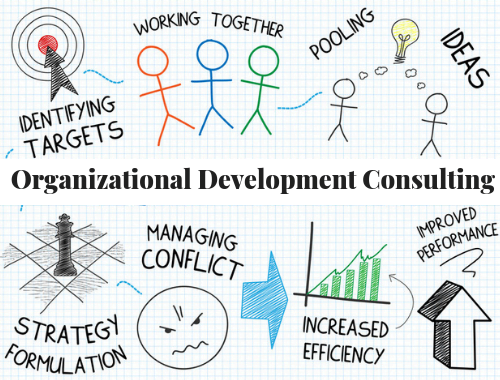Managing business transformation in an increasingly complex world is no easy feat, but these 3 tactics should accelerate the chances for a successful implementation and make the experience a bit more tolerable to bear.

Written by
Karan Rhodes
Being an Organizational Development pro, “business transformation” might as well be my middle name. There is not a client I support nor a conference that I attend where the topic of “transformation” is not front and center. No matter whether it is organizational, technological, operational, people or business transformation in play, leaders commonly reiterate how the success of the transformation is linked to the long-term survival of the organization.
No bones about it, business transformation is tough, ambiguous and complex. Few companies will claim that they have cracked the code on how to effectively deliver major transformation initiatives across the organization. Also, few businesses have a designated a Chief Transformation Officer, Transformation Project Manager . . or heck, even a person or small group to deeply think about how to best guide the organization to their new reality of the way they must work.
What organization worth its weight in gold can’t name at least 1-3 business transformation challenges they are going to face in the next 6-18 months? Even a behemoth of a company like Amazon is faced with a company headquarters expansion, the entrance into new markets, constant change efforts and a war for attracting and retaining A+ talent. Add to it other priorities companies face like AI, the rise of the gig economy, and the hyper-competitive market landscape, what are company leaders to do? Who can help make all this happen when your job is on the line?
The good news is that there are micro-consulting firms, like Shockingly Different Leadership, who can help lead the way. In my experience, most senior teams know what issues they need to tackle, but are unsure how to make it happen with minimal disruption to current operations and employee morale – not to mention being insanely busy and not having a ton of bandwidth themselves.
No matter if you are consider an internal leader or an external consultant, here are a few thoughts to help make your next business transformation initiative run a bit smoother:
Create shared accountability for the business transformation up, down, and across the entire organization
In order for any transformation effort to succeed, buy in by as many stakeholders as possible is critical. This includes vetting the potential transformation initiative with a cross section organizational staff, hosting a proper transformation Launch by senior leadership, and allowing all employees time to properly understand why the initiative is the best option for both them personally and the company overall. Give them time to mentally unpack how they are going to be impacted, what they are going to have to give up, and what their new reality will look like. Once assimilation and acceptance of the purpose of the transformation initiative happens, the bulk of all stakeholders will line up to do their part to make it happen.
Help teams and their leaders pinpoint what they need to learn to support the business transformaton efforts
Shared accountability is one thing. Actually doing the hard work is another. We frequently assume that everyone has the skills to make their part of a transformation initiative happen. Not so.
Allocate time up front to pinpoint what each segment of stakeholders need to both know and learn. Create development experiences that will help close these gaps. If your people are not properly prepared, they will spin in circles of confusion and you will find that little gets done or that your implementation timeline falls woefully behind. Remember that your people have day jobs and that any development experiences should be agile enough to allow them to fit it in their schedules.
Create a team of Power-brokers
Power-brokers are the influential informal leaders in your organization. They are the ones that have the ear of various leaders and/or employee cliques. Many times, if you get a power-broker’s buy in, their friends will follow. Transformation leaders should consider leveraging a mighty team of power-brokers to assist with translating, experimenting, and applying transformation milestones into actionable steps that work for their broader teams.
Don’t be intimidated if they challenge the status quo. Be curious about their perspectives and seek to understand what is bubbling up for them. Lastly, by strategically engaging your mighty army of power-brokers, you will have a better shot of maintaining the momentum, dialogue and energy around the transformation.

Many organizations are being forced to accept the uncomfortable truth that they don’t really know how to make transformational change happen at scale. By having a dedicated role, point person or working team, you can hopefully circumvent painful missteps.
My daily work for the last 20 years has been split between leading the people-related workstreams of large scale change initiatives and developing high performing leaders at all career stages to “lead at the top of their game”.
Change and leadership are two sides of the same coin, which is why I’m passionate about both giving leaders optimal development experiences AND being there to consult with them when they actually have to carry out what they’ve learned in real-time.

Have an upcoming transformation initiative where you could use a thought partner? We can help.
I invite you to set up a good time for us to chat about the scope and potential needs of your effort.



